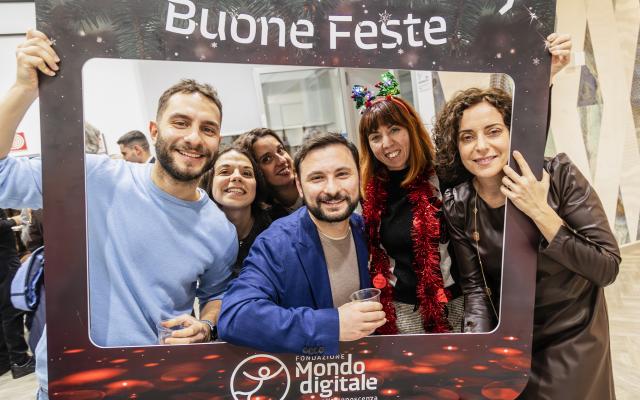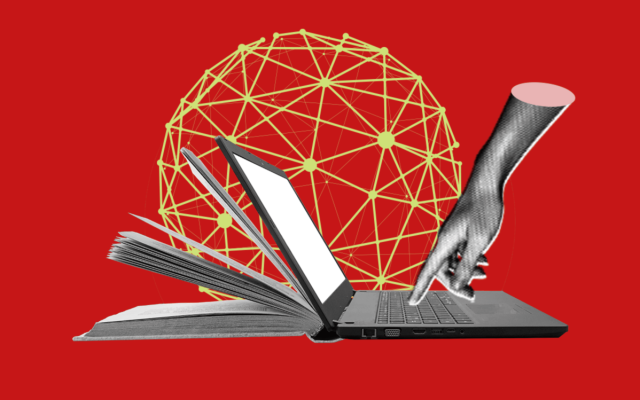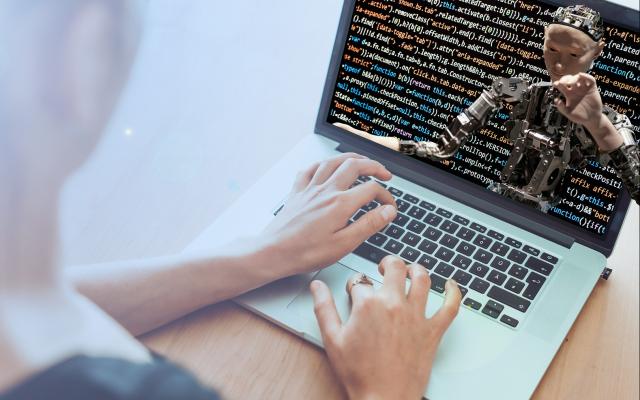Prof. Paolo Borrelli describes his school’s adventure at RomeCup 2024.
CThanks to Valentina Gelsomini, Technical Infrastructure and Educational Resources Coordinator, we have received a truly touching “school story.” We have decided to publish it and share it with everyone, thanking the protagonists. The story took place at RomeCup 2024.
Happy reading!
I wrote this story... and maybe I got carried away with a few AI tweaks ;-)
My name is Paolo Borrelli and I teach at the Liceo Ettore Majorana in Pozzuoli (Naples). I want to tell you a story that marked me both personally and professionally, as well as that of my students. This adventure began with our joining Project Ital.Ia Lab, an initiative developed by the Fondazione Mondo Digitale and Microsoft, that brought a gust of innovation and future into our classrooms.
The decision to participate in this project was not causal. It was the result of an ongoing personal journey based on passion and commitment, with FMD, to reap the benefits of technological innovation for education. The objective of Ital-IA Lab is ambitious and stimulating: to introduce and study the concepts of AI at school, providing students with the basic notions necessary to understand and interact with the technology that is shaping our present and future.
In my role as tutor, I had the privilege to lead over 110 students into the exploration of AI with six hours of theoretical lessons for each class, a focus on FMD’s learning platform, and an intense lab activity that the students welcomed actively and passionately. Indeed, their enthusiasm was contagious. Together, we discovered not only the principles of AI, but also the creative potential it can unleash when used consciously and critically.
However, the project did not just involve the students. I had the opportunity to extend AI training to my colleagues and our school manager, Prof. Elena Manto. The success of this introductory course pleasantly surprised us, marking the beginning of shared discoveries that saw our school fully embrace the challenges and opportunities provided by digital innovation. Freedom of expression and creativity were the key words of the lab that I held in which I encouraged the students to explore the use of prompts for GenAI to create original text and graphic content. The result exceeded any expectation: books, stories, articles, and fables are just a few of the examples that witness a creativity and capacity to learn that stepped far beyond the boundaries of traditional education.
In particular, two projects grabbed my attention: an innovative exploration of the Turing Test developed by Marika Chiaro, Denise Villino, and Ilaria Trosa, and a fascinating colouring book conceived by Sara Cotena and Manuela Del Giudice.
The project on the Turing Test must be mentioned for its audacity and originality. It did not just replicate the famous experiment devised by Alan Turing but reinterpreted it in a new perspective to explore the capacity of AI in a new and stimulating contest. The fulcrum is a creative dialogue between a human and a machine to investigate the capacity of AI to overcome gender prejudice. The young women started by asking the system to formulate ten neutral questions neither referring, nor inferring the gender of the interviewee, thereby eliminating all bias.
Subsequently, they involved 40 teachers at our school in interviews, asking them to respond to the AI-generated questions so that their gender was not revealed. The idea was to develop a series of neutral answers that would challenge the AI system in a game of cognitive shrewdness.
After having collected the answers, they were organised into 20 pairs of interviewees, mixing the answers of the male and female teachers. Each couple was simply labelled “A” and “B” and the corresponding answers were fed back to the system. Now, it had to face a double task. First, attempt to identify the gender of the interviewees based exclusively on their answers; secondly, provide an estimate of the certainty of the answer and explain the reasoning behind its conclusions. This project not only shed light on the ability of the students to think creatively and critically, but also provided an interesting reflection on the potential and limits of AI in recognising and interpreting complex human contexts, free from stereotypes and gender prejudice.
However, the work with colouring book encased the essence of our mission: to demonstrate how, with an informed use of technology, we can learn and also create something of unique and valuable.
The participation in Project Ital.IA Lab marked the beginning of an incredible journey for my students and I, but it was the preparation and subsequent participation in RomeCup 2024 (together with Sara, Ilaria, Maria Pia, Anna, Nicola, Raffaele, Christian, Manuel) that represented the apex of this adventure. The creation of the colouring book by Sara Cotena and Manuela Del Giudice, inspired by the enchanted world of princes and princesses, carriages and royal dogs became the symbol of our journey, a project that joined creativity, learning, and technology.
After having asked the Microsoft AI to generate simple but bold images for young children with clear lines and just a few essential colours and then transforming the images into black and white, we decided to publish the book on Amazon. The test copy arrived just in time, allowing to take it with us to RomeCup 2024, an event that we awaited with trepidation and hope. Our project would open the conference.
The excitement of presenting our book at such a prestigious event was great. And not just amongst the students, but also for myself and our school manager, Prof. Elena Manto, whose passion for digital tools had grown with our project. Sara’s decision to join us in Rome, notwithstanding Manuela’s absence, underline the strength and unity of our group.
On the opening day, sitting at the conference table, there also was Vincenzo Esposito, CEO of Microsoft Italia. And as a professional computer scientist with Microsoft in my DNA, my heart stopped. Gripped by enthusiasm, Sara and I decided to present the book. And it was the energy we obtained from the book’s pages that drove us to run towards Esposito at the end of the conference.
The most significant moment came, shortly before presenting our book, when we overheard a pivotal exchange. Mario Sturion, Managing Director di Johnson & Johnson, explained to Esposito the difficulties that her business encountered in using Copilot: “We tried to use Copilot. It was interesting, but we still have to understand it better and conduct training.” However, we had become proficient at using that AI tool. Immediately after this, Sara introduced herself to Esposito saying: “We developed this book with Copilot.” This exchange revealed a fundamental difference: the skills that we developed as an educational institution were not only advanced but also extremely significant for the current professional context.
In the meantime, everyone else from our school, including our school manager, had joined us. Esposito seemed excited by what he saw and freely expressed his enthusiasm for our work. He pointed out our project to others and said something like: “You really did this with Copilot? It’s fantastic, great work. I want this book. Can I have it? I’ll keep it!” We had just enough time to give him some technical information on its project and he said “I must absolutely sign it … actually you are the ones who should sign it! I want all your autographs.” And so, all the students signed the book. What a success!
And then he took a photo of us, incredible! So, it was clear that what we could offer was not just a scholastic exercise, but a concrete and precious skill. The presentation of our book to the CEO of Microsoft Italia was not just something that made us a proud, but also a demonstration of our ability to keep up with the requirements of the modern world, even going beyond the expectations of one of the biggest global companies.
The meeting with Esposito became a moment of pure joy and recognition. Seeing his admiration whilst he paged through the book, was an incredible moment.
I believe all of this underlines a key concept: technology, and in particular AI, is not just the dominion of global giants or abstract figures distant from everyday reality. It has become an integral part of education, a field in which even a school like ours can not only participate but excel and teach. By asking us to sign our book, Esposito inverted the traditional role between students and teachers, professors and professionals, and we felt we had accomplished something truly extraordinary. However, the true meaning of this experience lies beyond this recognition. It was a journey of growth, discovery, and accomplishment for my students. They realized that their commitment, curiosity, and ability to innovate could have a true impact, recognised by leading figures in the world of technology and innovation. This has motivated them to pursue their studies, thanks to the awareness of what they can do. As a teacher, I feel that this experience strengthened a profound belief: our role extends well beyond teaching didactic content. We must guide, inspire, and prepare our youth to join a rapidly evolving world, showing them that commitment, passion, and creativity and not only adapt to, but shape the future.
Concluding this incredible adventure, what remains imprinted in my mind and heart is the enthusiasm and satisfaction of my students. Seeing them recognized and celebrated confirms the value of education as a tool for empowerment, capable of opening doors and building bridges towards the future. This story, which was born in the heart of Pozzuoli and flourished in Rome, is a testament to the power of learning, innovation, and community.




